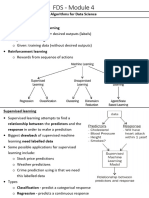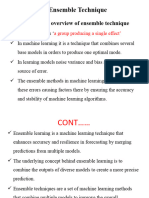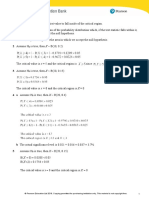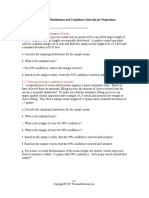0% found this document useful (0 votes)
62 views5 pagesUnit IV Ensemble Unsupervised Learning
The document covers Ensemble Learning and Unsupervised Learning, detailing techniques to improve model performance and analyze unlabeled data. Ensemble Learning combines multiple models through methods like Bagging, Boosting, and Stacking, while Unsupervised Learning includes clustering and dimensionality reduction techniques. Key concepts such as Random Forest, AdaBoost, K-Means, and PCA are discussed, highlighting their advantages and disadvantages.
Uploaded by
Boomika GCopyright
© © All Rights Reserved
We take content rights seriously. If you suspect this is your content, claim it here.
Available Formats
Download as DOCX, PDF, TXT or read online on Scribd
0% found this document useful (0 votes)
62 views5 pagesUnit IV Ensemble Unsupervised Learning
The document covers Ensemble Learning and Unsupervised Learning, detailing techniques to improve model performance and analyze unlabeled data. Ensemble Learning combines multiple models through methods like Bagging, Boosting, and Stacking, while Unsupervised Learning includes clustering and dimensionality reduction techniques. Key concepts such as Random Forest, AdaBoost, K-Means, and PCA are discussed, highlighting their advantages and disadvantages.
Uploaded by
Boomika GCopyright
© © All Rights Reserved
We take content rights seriously. If you suspect this is your content, claim it here.
Available Formats
Download as DOCX, PDF, TXT or read online on Scribd
/ 5
































































































